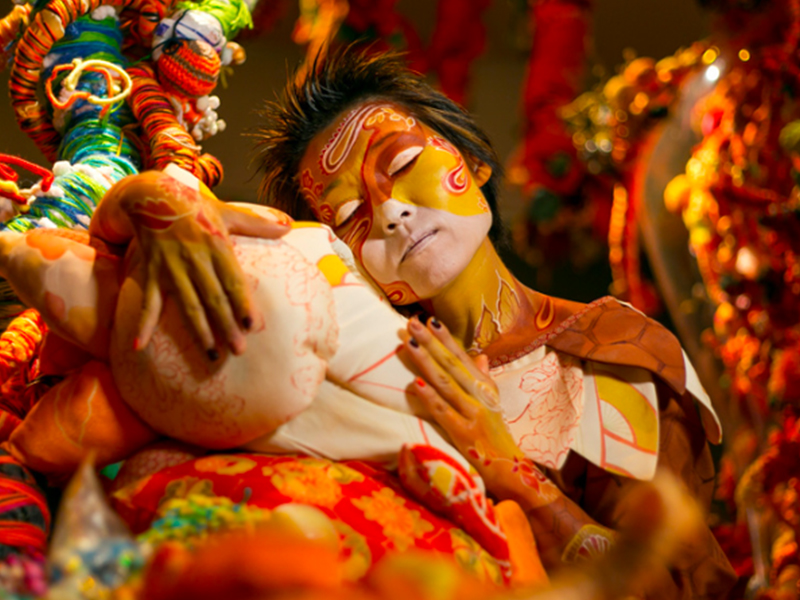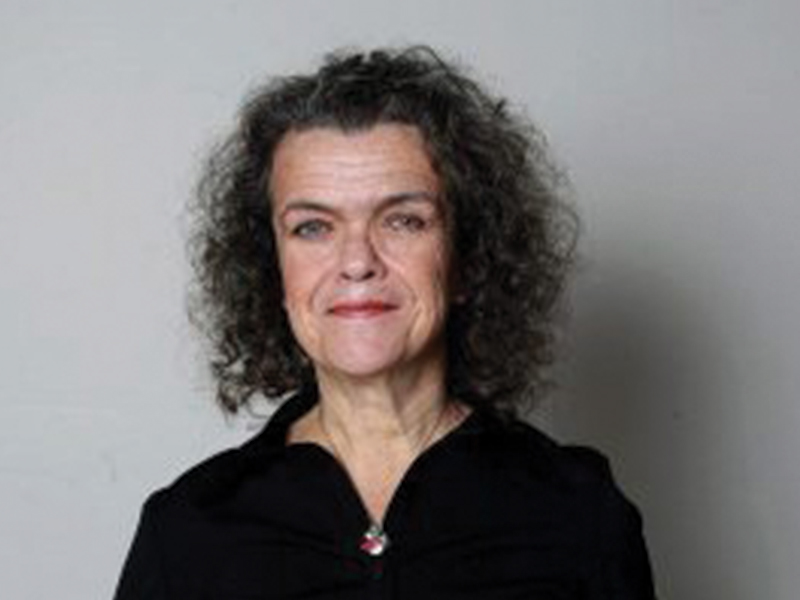
Join us online for Frame of Mind: Mental health and the arts

Studio Visit with Hiromi Tango
This is your rare opportunity to visit the studio of Hiromi Tango. Previously scheduled as the keynote speaker for the Frame of Mind program, Hiromi has been engaging dynamically at the intersection between art and mental health for over ten years. Audiences will gain an inside view into Hiromi’s artistic practice, materials and ideas live from her Tweed Heads studio. Led by National Art School Curator of Public Programs Nadia Odlum.

Interview with Professor Ian Hickie
In this conversation Faustina Agolley speaks to Professor Ian Hickie from the Brain and Mind Centre about the importance of the creative arts, particularly in times of crisis. Ian reflects upon the role that art plays in creating connection, and processing difficult mental health experiences.
“…the idea you could simply cope on your own by just exercising more or relaxing more or meditating more is also largely nonsense… You need to be able to talk about it and connect with people, as people historically do, through writings, through visual arts, through songs, through performance.”
Faustina and Ian discuss experiences of helping loved ones through distress, and the importance of people expressing distress together as a means of healing. Ian comments that during the pandemic,
“… everyone in every particular way, has found themselves disorientated by the thing, and distressed… one of the ways that people express distress is actually doing emotional things together, common things together, singing together, playing together, performing together, riding together… So the expression of distress, it’s really important. When people cry together, when they hug together, wherever else, when they grieve together, they’re better.”
Turning the conversation to the mental health challenges faced by those in the creative industries, Ian stresses the importance of creative practitioners feeling empowered and supported to seek professional mental health support.
“we often express distress in the creative areas through song, through film, through visual arts, through writing, but that doesn’t preclude us from getting professional help when we need it. And we need to support each other in terms of doing it.”
“The arts really matter. The collective expression of those things we think, and we feel deeply is often best expressed through the arts, not through political speak and not through other things. It’s much more fundamentally emotional, which is at the heart of what humans are.”
Interview with Professor Katherine Boydell
In an illuminating exchange, Faustina Agolley speaks with Professor Katherine Boydell from the Black Dog Institute about her dynamic work at the intersection between art and mental health research.
Katherine explains that important research findings in the field of mental health often don’t reach the right people. While they are passed around in academic circles, they are often not adequately communicated to people with lived experience of mental health challenges, to the general public and service providers, or to policy makers.
By collaborating with artists and performers, through “arts-based knowledge translation”, Professor Boydell and her team have found new ways of communicating findings in mental health research. She reflects upon the capacity of art to express the “richly textured lived experience” of mental health struggles, something that often cannot be captured by data alone.
In this conversation Katherine reflects on ‘light bulb moment’ that started this research. She also delves into the importance of supporting artists and audiences who are engaging with difficult subjects of mental health struggles. What are the strategies we can use, when wading into this “dangerous emotional terrain”, to mitigate the effect of this difficult material?
Finally, Katherine shares recent research into ‘body mapping’, and the ways this visual technique has been used in artistic practice to create large scale installations. She shares concrete examples of when arts-based translation of mental health research has led to policy changes that support better mental health services for communities.

Interview with Tyrown Waigana
In this friendly exchange Fuzzy talks to emerging Western Australian artist Tyrown Waigana about his work, life, and aspirations as an artist.
Tyrown discusses his family’s artistic background, and how that inspired his own journey as an artist. He reflects on the humour that permeates his work, and how it can be used to explore difficult issues.
“I always find things are easier when they’re funny… sometimes when you’re talking about the bigger, loaded social topics it’s kind of easier to disarm people with humour… if I can make something funny I will.”
The conversation delves into how Ty’s art practice helps support and express aspects of his mental health.
“I think having my practice very much helps.. because it is a way to express myself. I find a lot of the times I know I’m feeling something, I don’t know necessarily what I’m feeling, but I know I’m feeling something, and I find that my practice tends to encompass things that can’t necessarily be said.”
They discuss representation, and the importance of people seeing their lives and stories reflected to them in artworks and media. Tyrown explains that this is a key motivation for his comics and animations, which use surreal humour to depict every day and sometimes mundane aspects of life.
“There’s a lot of stuff around traditional aspects of Aboriginal culture, and this kind of mysticism that goes along with us, but it’s kind of missing a lot of the people element… a lot of us are just trying to make the most of our lives, as people.”

Interview with Dr Debra Keenahan
In this powerful conversation, Dr Debra Keenahan joins Faustina Agolley to delve into her artistic practice and research.
Drawing from a career in psychology, Debra’s first PhD explored the concept of dehumanisation – in a nutshell, when people treat others as less than human. After teaching for many years in the field of human rights, Debra increasingly embraced art making as a means of exploring and communicating this complex issue.
“I always had a passion for art, and what I found was that, in many ways, art was a way of engaging people in really difficult issues. And engaging a very broad range of people, and to do so, actually, rather quickly. And so in many ways I would not say that I gave up psychology. I just found a different way of working with it.”
As an artist whose work ranges many mediums – from sculpture, to VR, to performance – Debra speaks eloquently about the ways that different artistic approaches can elicit various responses from audiences. By adopting a multidisciplinary practice Debra strives to find the best way to communicate concepts and evoke understanding.
“Art is a very effective way of helping people to see another perspective, another point of view. And so this is what I always try to do with my art, using different mediums, and different approaches. Because everybody has a different way of seeing the world, and experiencing it, so different mediums will work less or more so for different people.”
The conversation explores Debra’s own experiences of discrimination as a person with Achondroplasia dwarfism, and the cumulative impact of microaggressions and othering. Faustina and Debra discuss their relationship to the word ‘resilience’ and the personal mental health strategies they use to ‘fill their cup’. Debra reflects poignantly on the incredible power of art to create opportunities for empathy and learning:
“For people to just have that moment of reflection and insight…that is the open door to change.”
The National Art School is on Gadigal land.


